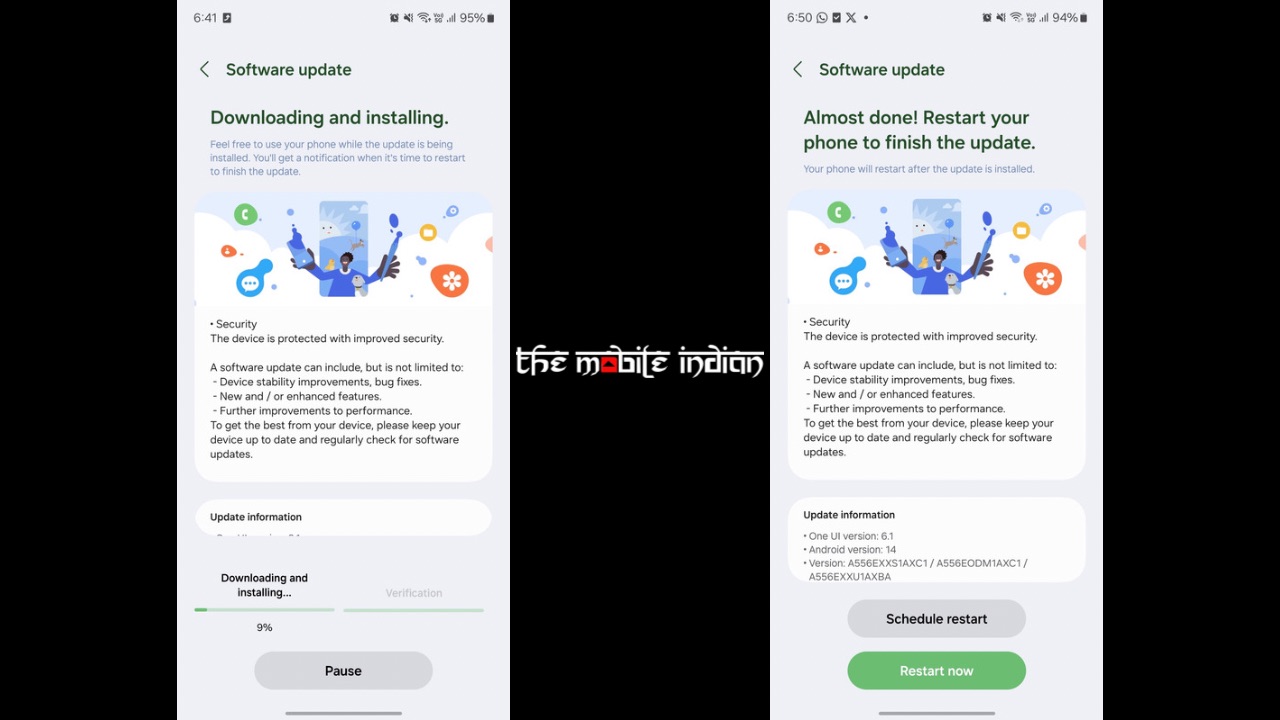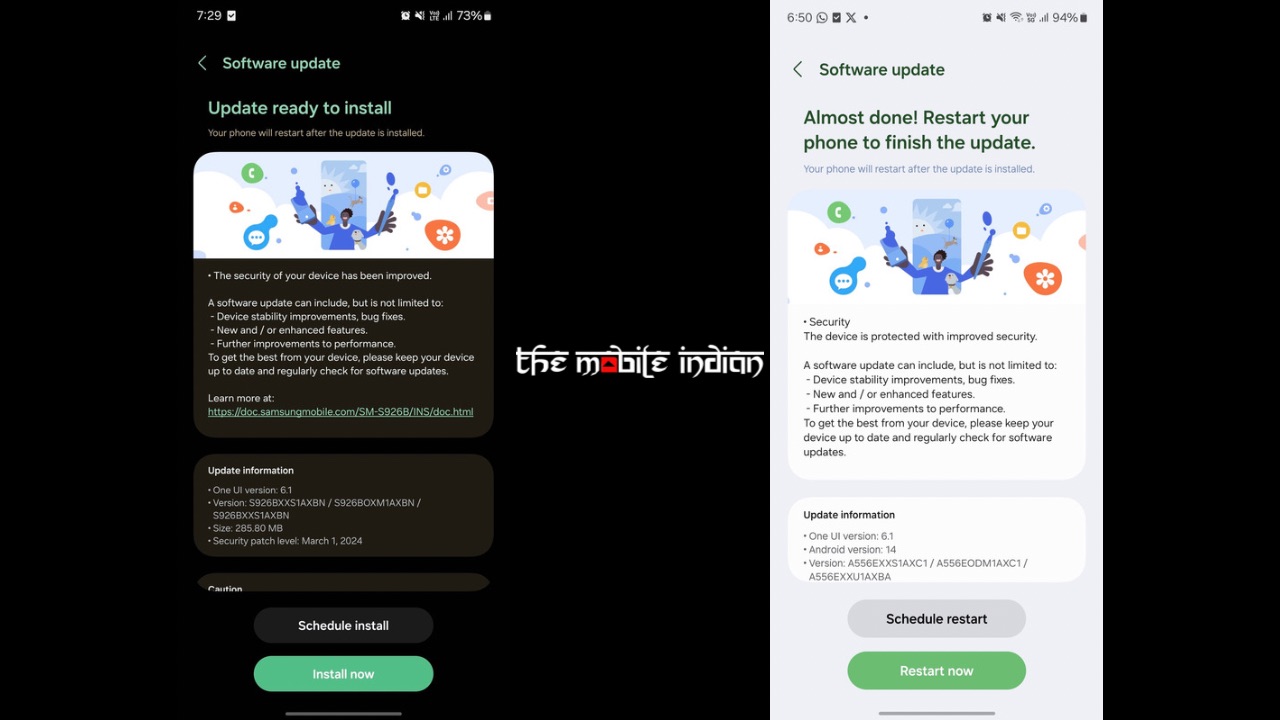After initially refusing to adopt “seamless updates”, Samsung has changed its stance. The Galaxy A55 5G is now the first smartphone from Samsung to support seamless updates.
After installing the latest March 2024 patch on our Galaxy A55 5G a while back, we noticed that the software update screen showed two stages of installation. The first stage was “Downloading & Installing” while the second stage was “Verification”. All the other smartphones of Samsung, including the Galaxy S24 Series, require users to restart their devices to complete the update installation, which can be time-consuming. However, with the latest development, the update was installed in the background, and we only had to restart our device to complete the update, instead of seeing it install on the One UI installation screen.

It is surprising that Samsung chose to release the feature on one of its mid-range phones, the Galaxy A55 5G, rather than their flagship phones like the Galaxy S24 series. A screenshot comparing the software update pages of the Galaxy A55 5G and the Galaxy S24+ highlights the difference in the wording used to explain the update process.

Upon restarting the device, we did not encounter the One UI installation screen that we see when we update other Samsung phones. Apart from that, the device rebooted faster than the Galaxy S24+ after it received the March 2024 patch.
It is also possible that Samsung will bring the same feature to its other devices with future updates. However, we can confirm that the Galaxy S24 series didn’t receive the feature in the February patch, while the Galaxy A55 5G came with it out of the box.
Related: Samsung Galaxy A55 5G Review: Is It A Value for Money Offering?
What is seamless updates?
In 2016, Google unveiled a feature for Android known as seamless updates. Unlike traditional update methods that require a device reboot and lock users out during installation, seamless updates install new software updates in the background. This approach involves updating a secondary system partition, with the device booting from this partition upon restart. Consequently, the primary and secondary partitions alternate upon reboot, ensuring a smooth transition with each update cycle.
Notably, seamless updates offer several advantages. They eliminate downtime associated with traditional update methods and enhance safety by providing a backup partition to which the device can revert in case of installation errors. However, seamless updates consume more internal storage space despite these benefits, which may explain Samsung’s reluctance to adopt the feature on its Galaxy devices earlier.



